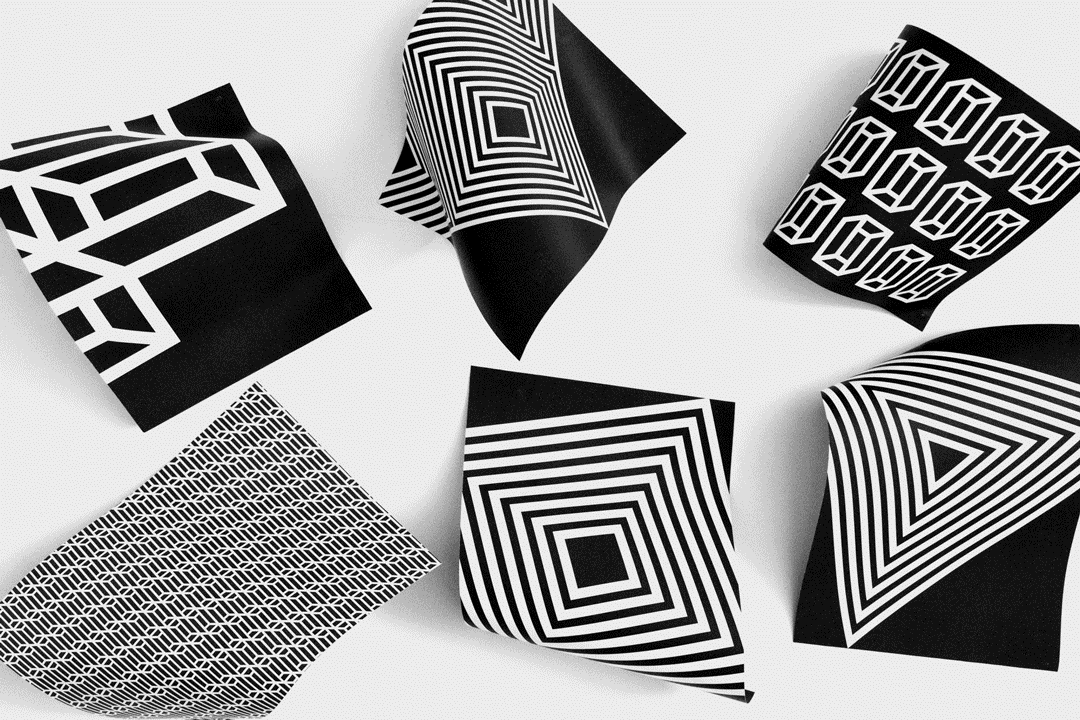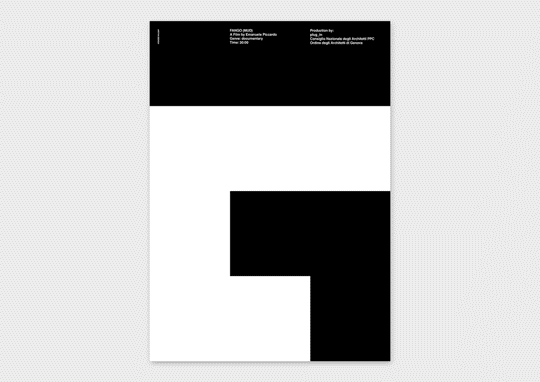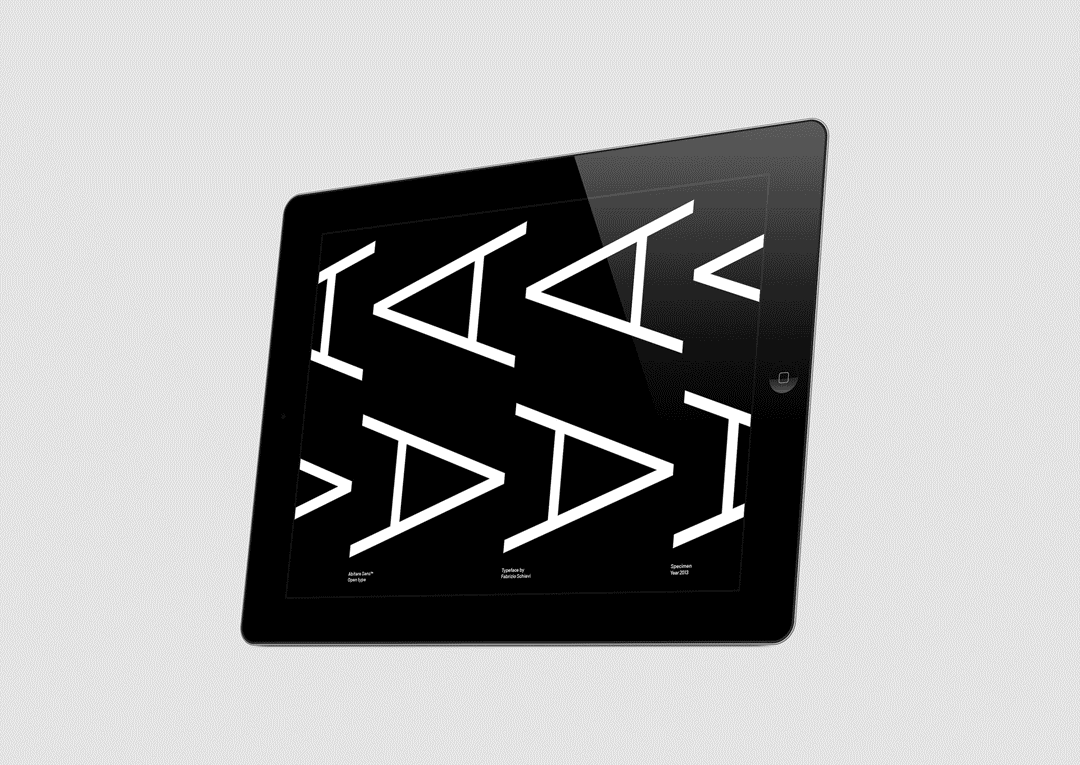Profile: Artiva
Genoa, Italy. 2017
Michael Klein,
Only a few designers embody the tradition of Italian graphic design with the rigour and contemporary flair of Artiva. Based in Genoa, Italy, Artiva was founded in 2003 by Daniele De Batté and Davide Sossi. Their projects are focused on the presence or absence of graphic elements in geometry and on the use of a rigorous grid system.
Both Daniele and Davide come from an architectural background. How has that influenced your work?
We've both studied architecture but the truth is that we probably wanted to do other things. In fact, during that period, we've started separately to take the first steps in the graphic field, doing some small projects. Personally I've never thought it's so different to design a building rather than a poster. I learned that the real issue in designing something is to know how to do it, no matter what, because the approach will be the same for both of them. Concerning this, I invite you to read the article by Matteo Munari, published on this site. The border between different disciplines is always quite subtle, imagine it as a permeable membrane that separates architecture from music, design etc... Basically, there's a framework where you can insert all of the different elements. For a book as for a catalogue, you need to plan a grid carefully considering the text, the illustrations, the number of pages. The grid system we are so fond of, it's a method that allows us to give structure to a project. To be free you have to fix some rules; it might sound strange but the real creativity needs discipline.
What is the most important quality for a designer to possess?
To keep a self-critical attitude, knowing your own limits. If you never lose interest in what you do learning new things, keeping yourself up- to -date (about music, movies etc...) you are more conscious of what surrounds you. And then it comes the moment to make, when you create your works and all the things you've learned and stored up, turn out to be very useful. You'll find a lot of those things in your projects.
Your work builds off a few elements that are clearly distinguishable and always arranged in a similar fashion. Are you developing a visual language?
We've fixed some parameters in order to be more effective: proportions, typeface, two-colour print, and, of course, black and white. It is sure that our distinctiveness is the use of a colour palette which is very essential and extremely reduced. We often use black and white that, according to us, is the sincere expression of a project. We just remove what is superfluous. When we work we use a series of recurrent words that, in some way, could describe our graphic style, such as Contrast, Tension, Balance, Scale, Timeless, Grid, Module, Black & White.

Does your way of working originate from a design ethos?
There's a sort of philosophy in everything we do. This is what has led our work to a definite direction.This is a job where your personal life and what you do are often woven. We do this job enthusiastically everyday so, in some ways, it “invades” our private life as well, there's a strong connection between us and what we create.
You have said of your work that it has a certain balance and tension. I'd like you to elaborate on that.
By balance we mean that all the different graphic elements such as the weight, the grid system, the module, must create an harmonious composition. Tension is a contrast between two elements or more. In order to provoke this sort of fight, we use asymmetry. Graphic elements very small close to others a lot bigger; empty spaces against full, dense areas. All these combinations create dynamic, powerful compositions.


How do materials play a role in your design philosophy when designing for print?
We're inclined to a minimalist attitude where black meets a white sheet of paper. We prefer uncoated papers. We appreciate those projects you see around in which there 's a sophisticated combination of different types of paper with “special” colours. We like them, we sometimes buy them and we've even used them ourselves but at the end, we choose simplicity.
The Italian master AG Fronzoni once said that color belongs on flowers, and that people should only wear white underwear. Do you take a similar stance?
I knew A.G. Fronzoni since I was studying at university. Once I was asked to do a work for the municipal district of Genoa and they said to me: “We want something in the Fronzoni style...” I knew the poster he did for Lucio Fontana, so powerful, but it was only years after, when I was working on the book 'A lesson with A.G. Fronzoni' that I realized that we have several things in common with him concerning the design, especially about the process of a project. But, I buy black underwear unlike he used to do...
If you had to pick just one, which book would you say is the most important for a designer to possess, and why?
It's quite difficult to choose just one... Maybe, a book by Bruno Munari “Da cosa nasce cosa”. He was not only a genius of our times (a modern Leonardo Da Vinci) in almost every discipline but he was also an extraordinary writer. In this book (like in all his books) he talks about difficult principles of visual communication and design, in a very comprehensible way. I've always admired his liking for experimentation. I recommend this book to anyone, not only to the professionals in our field.



What do you think of your generation of designers compared to the previous one?
Of course, many aspects have changed. When I started graphics used tools like dry tranfer letterings, pictures, ink, photocopiers. Nowadays everything is more simple, quicker, you can change idea easily whilst an ink line drawn on a sheet was for ever. The negative thing is that today there's an excessive use of computers. The computer is only a tool, it's not the aim.
How has being Italians shaped you as both men and professionals?
As men, I don't know... when I become wiser I'll take a look back at my life. As professionals, well... this field is complicated, like everything else I think. I mean, nowadays we are living in a global era, I think of the “Global village” by McLuhan(1)... no frontiers, we are connected one another. Internet is one of the most impressive means of communication in mankind's history. In a short time it has changed our lifestyle, our work, opening new possibilities. In fact, when I get offline, it just kills me...
Thank you for this interview.